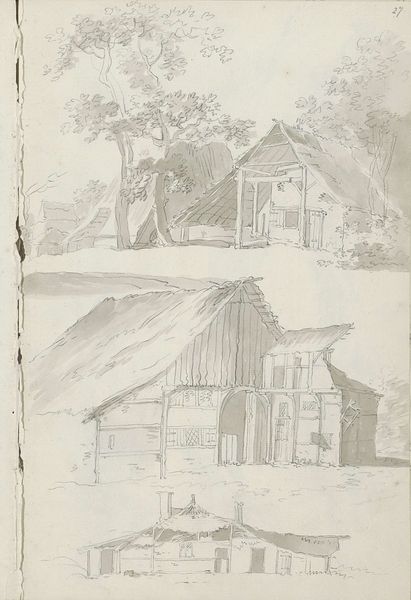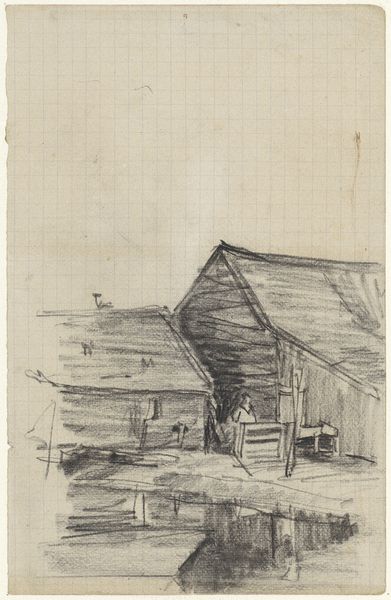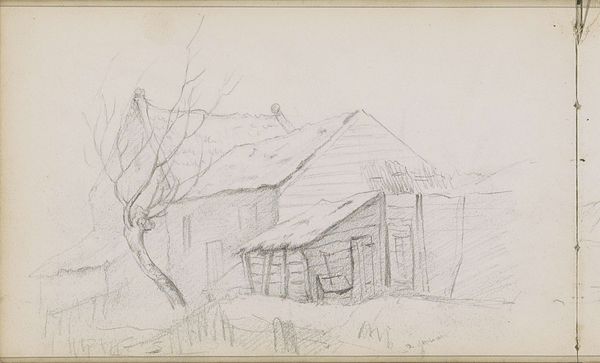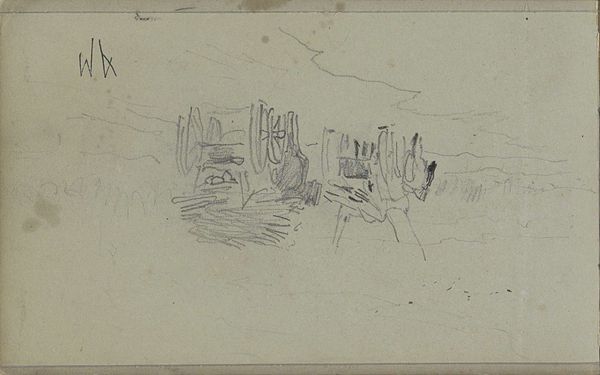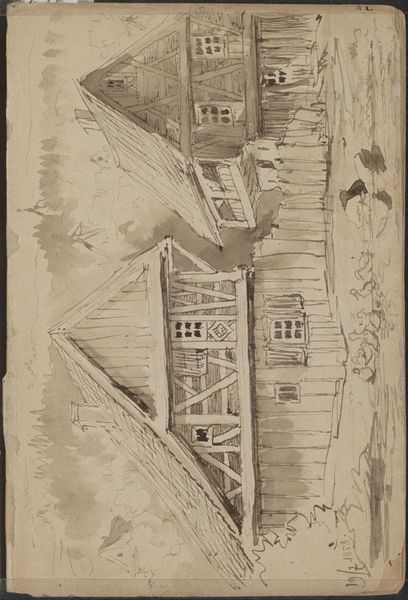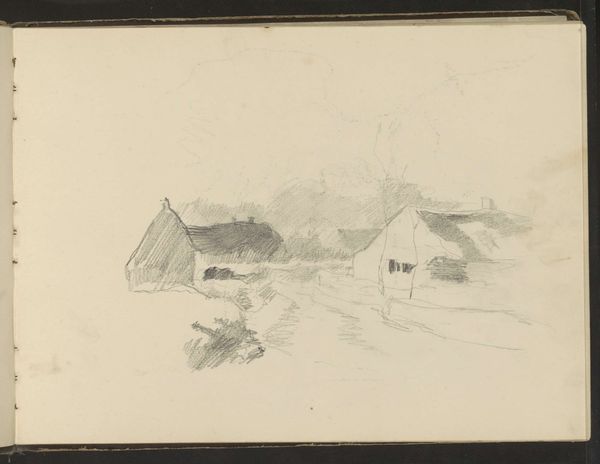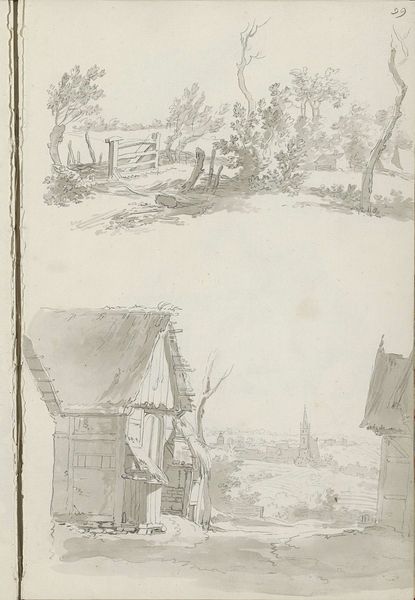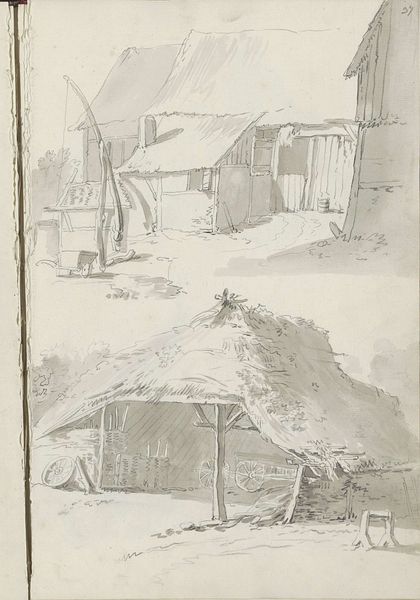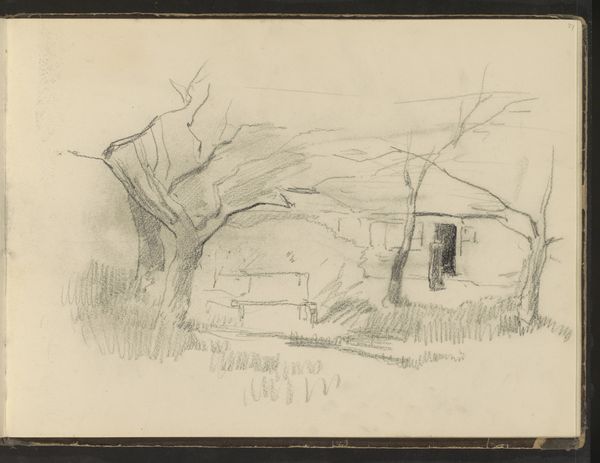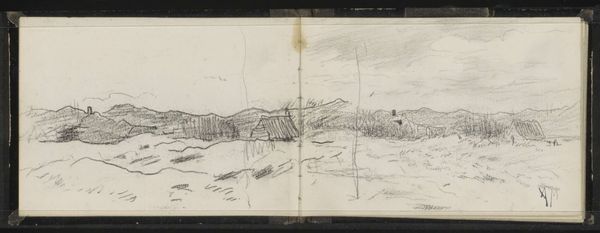
drawing, pen
#
drawing
#
neoclacissism
#
aged paper
#
toned paper
#
quirky sketch
#
pen sketch
#
pencil sketch
#
sketch book
#
landscape
#
personal sketchbook
#
pen-ink sketch
#
sketchbook drawing
#
pen
#
genre-painting
#
sketchbook art
Copyright: Rijks Museum: Open Domain
Barend Hendrik Thier made this drawing of a well and a peasant’s hut with pen and brush, sometime in the late eighteenth or early nineteenth century. At this time, Dutch artists were developing a new interest in landscape, and especially in scenes of ordinary, rural life. Here we see a well-worn wooden structure for drawing water, and the low construction of the hut indicates it was made of readily available, cheap materials. By focusing on these subjects, Thier and his contemporaries were idealizing the simple life of the peasant, a life of hard labor dependent on the natural world. It’s worth remembering that the Netherlands was also a highly urbanized society, with a powerful merchant class, and that this image may tell us more about the fantasies of city dwellers than about the realities of rural poverty. To interpret this drawing more fully, we might look at popular literature and political writings of the time. By putting art in its social context, we can begin to understand its cultural meanings.
Comments
No comments
Be the first to comment and join the conversation on the ultimate creative platform.
